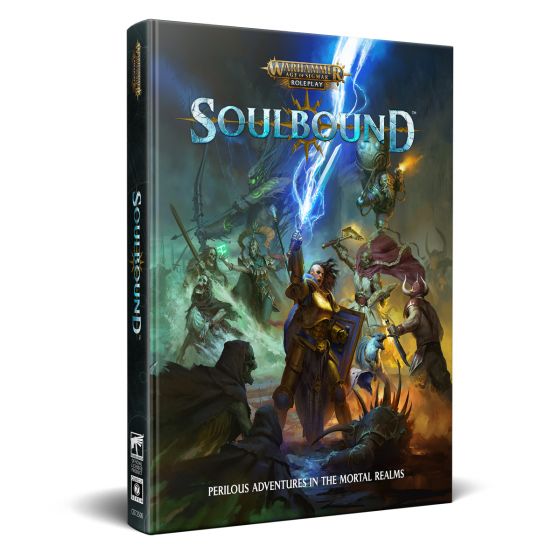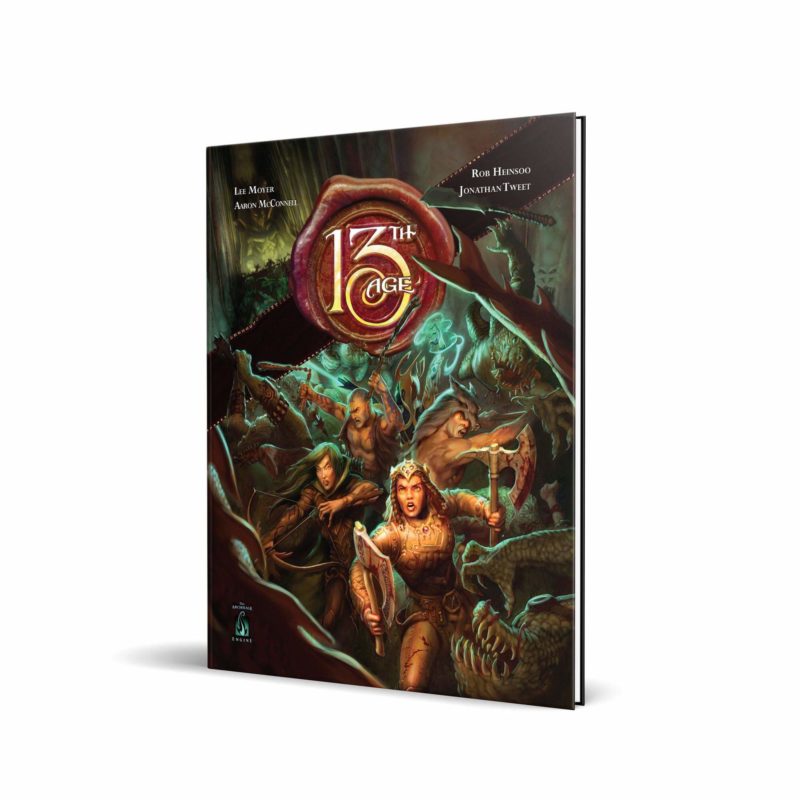Age of Sigmar: Soulbound Fantasy; High-Fantasy; Dark; Narrative-Driven; Class-based; Character Customization; Tactical Combat
Age of Sigmar: Soulbound is a tabletop roleplaying game set in the high-fantasy, dark world of the Mortal Realms. It emphasizes narrative-driven gameplay and tactical combat, offering a unique experience where players take on the roles of powerful, customizable heroes known as Soulbound. These heroes are tasked with shaping the future of the realms against the forces of Chaos, Death, and Destruction. The game utilizes a class-based system with extensive character customization options, appealing to players who enjoy heroic fantasy with a blend of detailed combat and engaging storytelling.
Theme and Setting
Soulbound is set in the Mortal Realms, a high-fantasy world born from the ashes of the Warhammer Fantasy Old World. These realms are dimensions linked by Realmgates, each with its own elemental theme and unique cultures. The setting blends high fantasy with elements of magitech and post-apocalyptic horror, presenting a world filled with gods, monsters, and ordinary people struggling for survival. The game departs from the grimdark tone of other Warhammer settings, offering a glimmer of hope amidst the darkness.
The narrative focuses on the constant struggle between the forces of Order, Chaos, Death, and Destruction. Cities of Sigmar stand as bastions of light and civilization against the encroaching darkness, while ancient ruins and hidden vaults hold secrets and dangers waiting to be uncovered. The Great Parch, a key continent in the Realm of Fire, provides a detailed backdrop with diverse locations, from merchant cities to volcanic fortresses, each with its own unique challenges and opportunities for adventure.
The concept of Soulbound characters, whose essences are entwined, adds a unique layer to the setting. This binding creates a powerful connection, protecting them from the God of Death's servants and allowing them to draw upon each other's strengths. These smaller groups work covertly, acting where larger forces cannot, shaping the fate of the Mortal Realms through their actions.
Core Mechanics and Rules
Soulbound utilizes the C7D6 system, which is designed to facilitate heroic action and tactical combat. Characters are built using archetypes, skills, and talents, allowing for diverse and distinct character builds. The game emphasizes meaningful tactical decisions during combat, with players managing resources like Mettle and Soulfire to enhance their abilities and overcome challenges.
The core mechanic involves rolling a pool of six-sided dice, aiming to achieve a target number based on the character's skills and attributes. Successes are counted, and the higher the number of successes, the better the outcome. The system also incorporates narrative elements, allowing players to influence the story through their actions and choices.
Character creation offers numerous options, with over 20 archetypes available in the core rulebook. Players can choose from various races and classes, each with its own strengths and weaknesses. The game also includes rules for crafting, alchemy, and vehicular combat, adding depth and complexity to the gameplay experience.
What Makes it Unique
Soulbound distinguishes itself through several key features. The Soulbound mechanic, where characters are linked together, promotes teamwork and cooperation. This mechanic is central to the game's narrative and provides a unique dynamic for player interactions. The setting itself offers a blend of high fantasy and dark themes, creating a rich and immersive world for players to explore.
The game's focus on heroic action sets it apart from other Warhammer settings, which often emphasize grimdark themes and moral ambiguity. Soulbound allows players to take on the roles of genuinely powerful heroes, capable of shaping the fate of the Mortal Realms. The tactical combat system provides a satisfying challenge for players who enjoy strategic gameplay, while the narrative elements allow for engaging storytelling and character development.
Furthermore, the game's modular design allows Game Masters to customize the experience to suit their preferences. The setting can be easily adapted to fit different playstyles, from dungeon-crawling adventures to political intrigue campaigns. The availability of numerous supplements and expansions further enhances the game's replayability and customization options.
Target Audience and Player Experience
Soulbound is aimed at players who enjoy high-fantasy settings with a blend of tactical combat and narrative-driven gameplay. It appeals to those who appreciate character customization and creating powerful, heroic characters. The game is also suitable for players who are new to the Warhammer universe, as it provides a comprehensive introduction to the Mortal Realms.
The player experience is designed to be engaging and immersive, with a focus on teamwork and cooperation. The Soulbound mechanic encourages players to work together, leveraging each other's strengths and overcoming challenges as a group. The tactical combat system provides a satisfying challenge for players who enjoy strategic gameplay, while the narrative elements allow for meaningful character development and storytelling.
Overall, Soulbound offers a unique and rewarding tabletop roleplaying experience, combining the best elements of high fantasy, tactical combat, and narrative-driven gameplay. It is a game that can be enjoyed by both experienced RPG players and newcomers alike.



